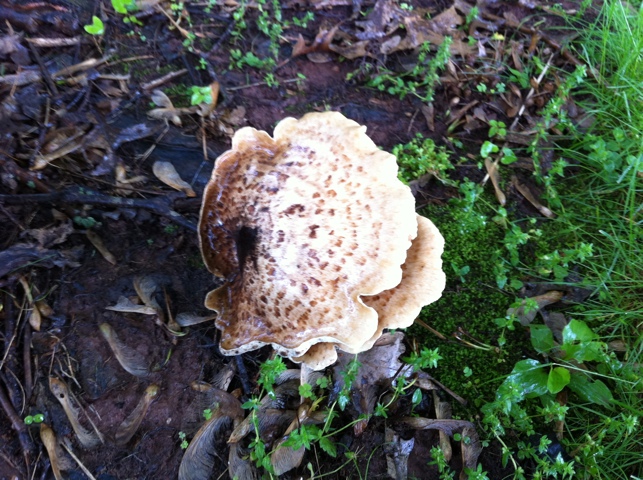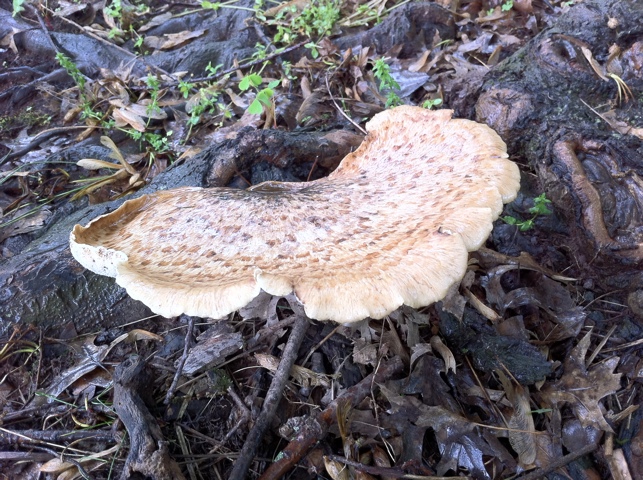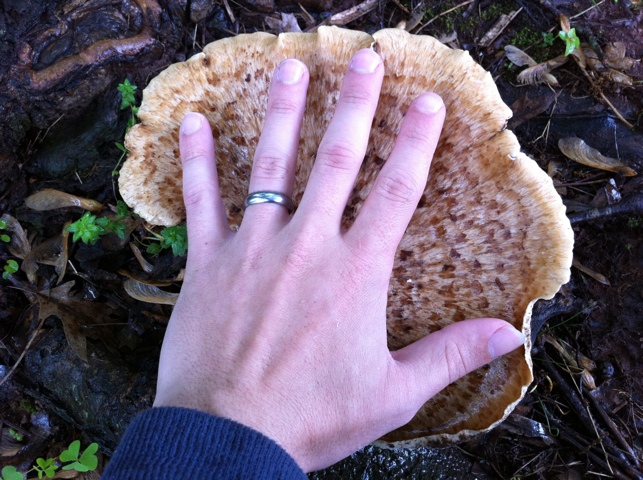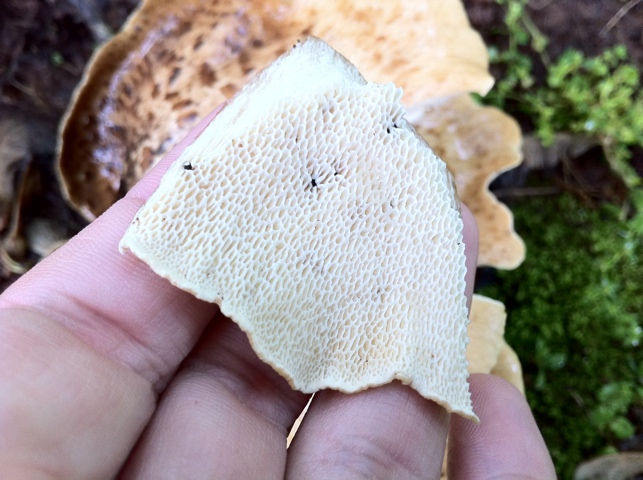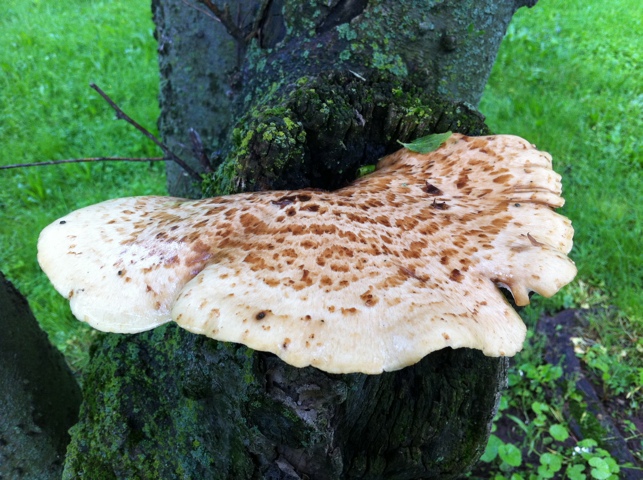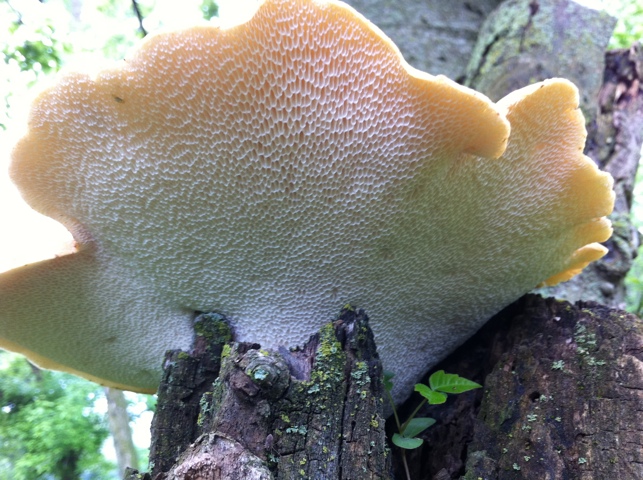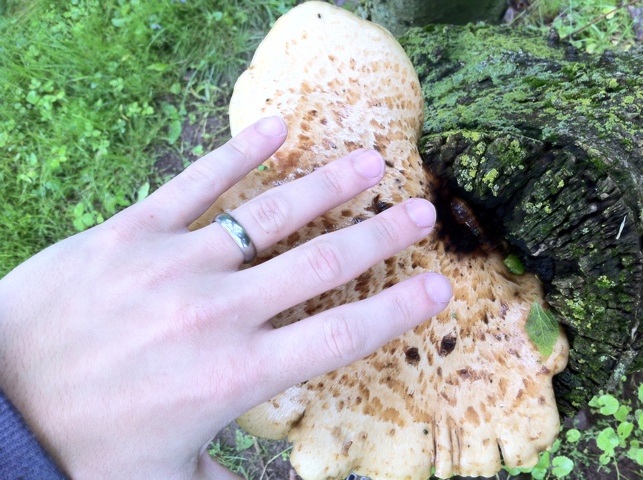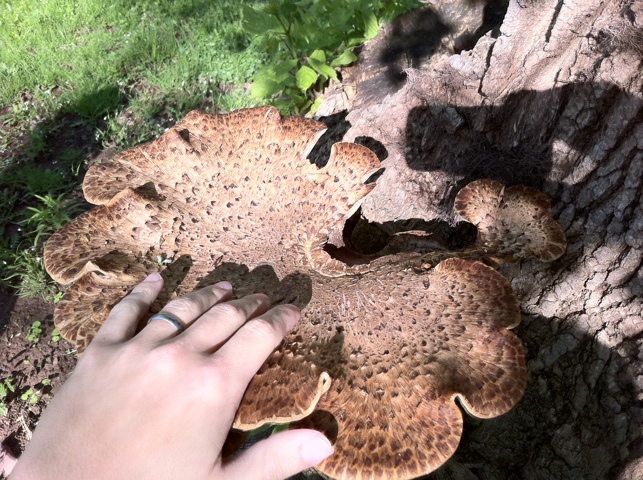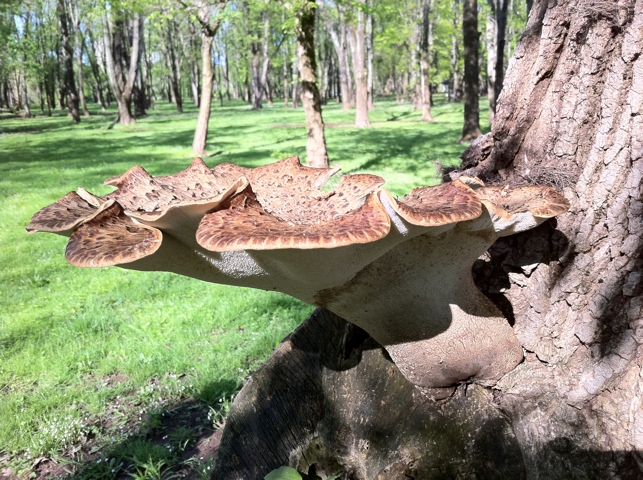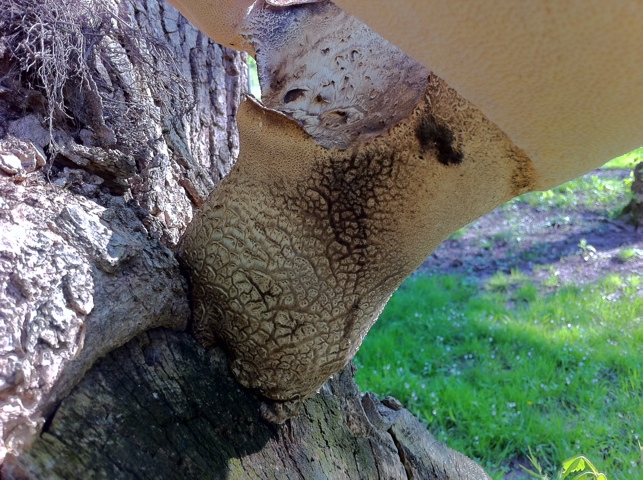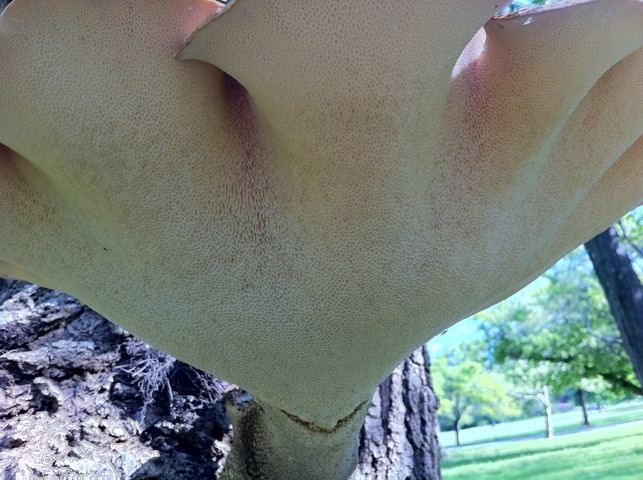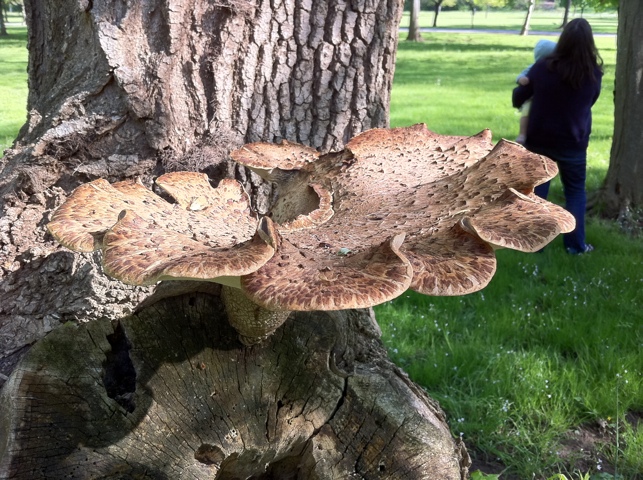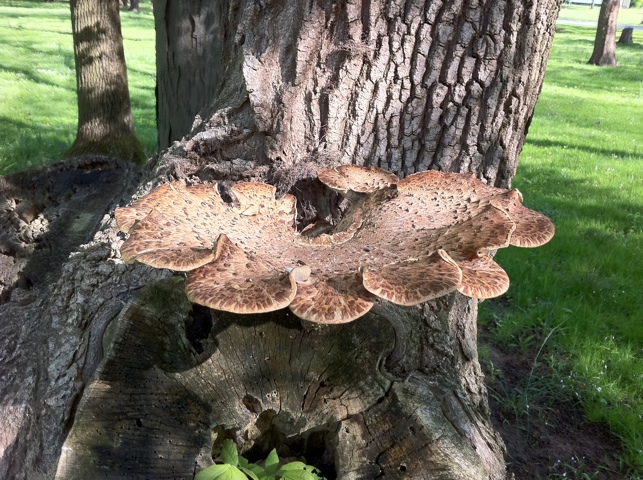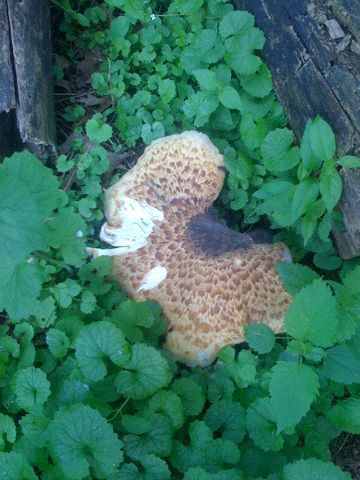These were growing up from the roots of a maple tree.
Category Archives: Polyporus squamosus
#1 Fresh Dryad Saddle
So fresh it made the whole car smell like watermelon (one of the odd quirks of this species of mushroom, although it certainly doesn’t taste like watermelon, or smell like watermelon after it’s cooked).
This one might be for sale on the upcoming RogueLeaf Fungorium. More soon about that. 🙂
In the meantime, if you’d like to purchase this specimen, email in to RogueLeaf •at• gmail •dot• com.
FDA Food Code 3-201.16 Wild Mushroom Buyer Specification:
- Name & Author: Polyporus squamosus (Huds.) Fr. – “Dryad’s Saddle” “Pheasant Back”
- Fresh Identification: This mushroom was identified in a fresh state.
- Name of Identifier: Steve Caruso
- Identifier Qualifications: Active amateur mycologist 5+ years.
Further information:
- Mushroom edibility tested.
- No mushrooms in this family are known to be toxic.
- P. squamosus is a good “carrier” mushroom for other flavors as it does not have a very strong flavor, itself.
- This specimen is very young and tender.
- Like most polypores, the edges are the most tender portion of this mushroom and are best suited for eating, where the inner portions can sometimes get a little tough and are best suited for making broths.
- If not sold within 1 week’s time from this posting, it will be dehydrated and offered for sale dried.
#1 Huge Dryad’s Saddle
Huge Dryad’s Saddle
Awesome Find: Young Polyporus squamosus
Generally corky and technically edible, Dryad’s Saddle, or Pheasant’s Back are Polyporus squamosus‘ common names, and it has one of the most interesting properties in the Mushroom kingdom: When cut open, it smells like fresh watermellon rind. Unbelieveable. They also sometimes grow to gigantic size (at one time there was one growining in my grandparents’ yard at the base of a dying maple that was nearly 2 feet across).
The specimens my wife and I found after a heavy rain were also young enough to eat, as when they are soft enough to cut with your fingernails, they’re easy enough to chew.
Unfortunately, they were also too young to obtain a sporeprint…
Since we very strictly adhere to beyond-a-doubt microscopic identification before consuming any mushrooms we find in the wild, this treat will unfortunately meet the trash, much like the first time we came across Agaricus arvensis (a rather choice edible).
When in any doubt, throw it out, and for us, that means matching microscopic criteria. No exceptions.
But hey, they were absolutely gorgeous, and now we know where they grow. More data is needed. 😉
(Note on the last picture, there are some unidentified Coprinus that were deformed due to the heat and sudden dryness after the rains.)
